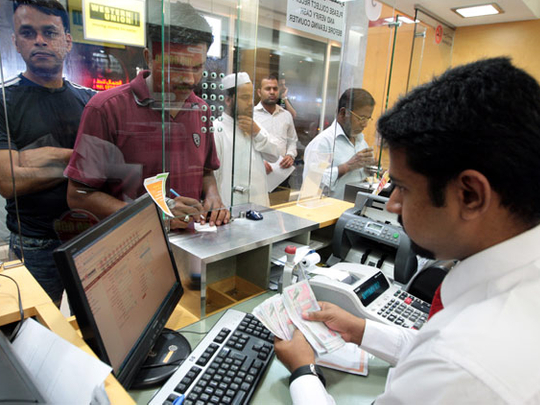
Dubai: The Gulf Cooperation Council (GCC) accounts for nearly 50 per cent of remittances to South Asian countries and Middle East and North Africa (Mena) countries, according to a World Bank report.
Titled “Migration and Remittance Flows: Recent Trends and Outlook,” the report revealed that while the GCC accounted for 48 per cent to total remittance to South Asia region it contributed 42 per cent to Middle East and North Africa (Mena) region. United States emerged as the top source of remittance to Latin American countries contributing 71 per cent of money remitted there as Russia became major source of remittance to Europe and Central Asia accounting for 31 per cent of remittance to that region.
“GCC will continue to grow in its stature as a major remittance source bloc with countries like the UAE and Qatar lining up major development projects, particularly in infrastructure, which will in turn lead to more influx of expatriate labour force,” Sudhesh Giriyan, Vice President & Business Head, Xpress Money, said.
“The rising manpower needs in GCC means that the potential of growth in remittances is also high. The falling cost of remittance from GCC to countries in the Mena region will also substantially support remittance growth to these countries,” Giriyan said.
Remittance flows to developing countries are expected to reach $414 billion in 2013 (up 6.3 per cent over 2012), and $ 540 billion by 2016. Worldwide, remittance flows may reach $550 billion in 2013 and over $700 billion by 2016, the World Bank report stated.
Remittance flows are expected to continue to increase in all regions and major recipient countries except Mexico, where flows may dip in 2013. Flows are expected to remain strong or even increase in several countries affected by weakening balance of payments, notably India, the top recipient of remittances in the world.
Among top beneficiaries of global remittance, India tops the list with an estimated $71 billion. China got $60 billion, the Philippines $26 billion, Mexico $22 billion, Nigeria $21 billion and Egypt $20 billion.
In India, remittances are larger than the earnings from IT exports. “Fall in the rupee exchange rate and attractive interest rates on external deposits have helped drive remittances to India, thereby supporting the balance of payments situation and contributing 3.7 per cent to India’s GDP . Most of our clientele are migrant workers, who work in the GCC market. About 65 per cent of these are Indians. Last year, we helped remit $5.8 billion to India only through our GCC corridor. We estimate remittance flows to India through UAE Exchange to touch $10 billion by 2015,” Promoth Manghat, Vice President-Global Operations, UAE Exchange, said.
Growth of remittances has been robust in all regions of the world, except for Latin America and the Caribbean, where growth decelerated due to a sharp decline in remittances to Mexico.
In South Asia, remittances have a big supporting role on the balance of payments. In Bangladesh, Nepal, Pakistan and Sri Lanka, remittances are larger than the national foreign exchange reserves. All these countries (most notably, Pakistan) have instituted various incentives for attracting remittances.









